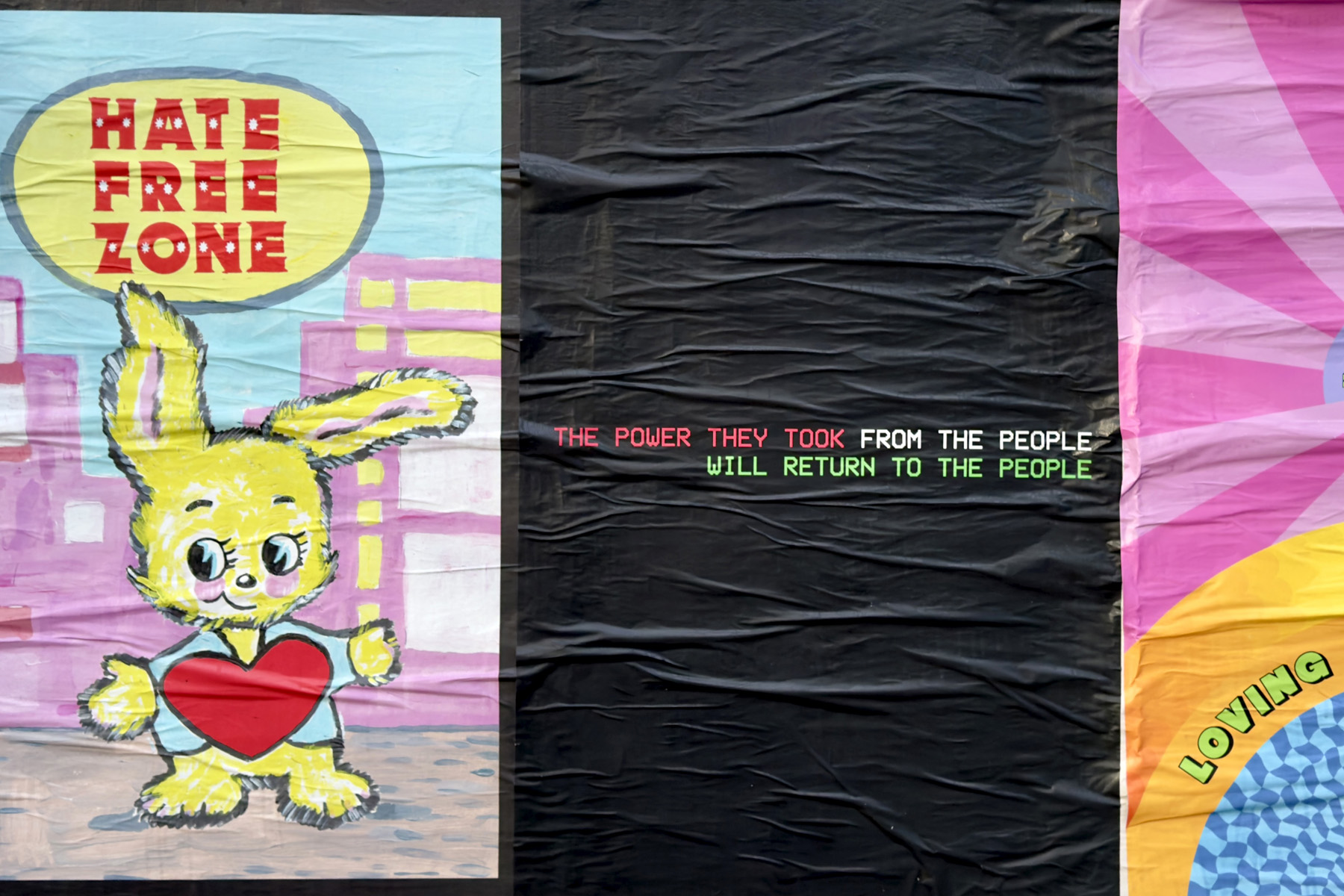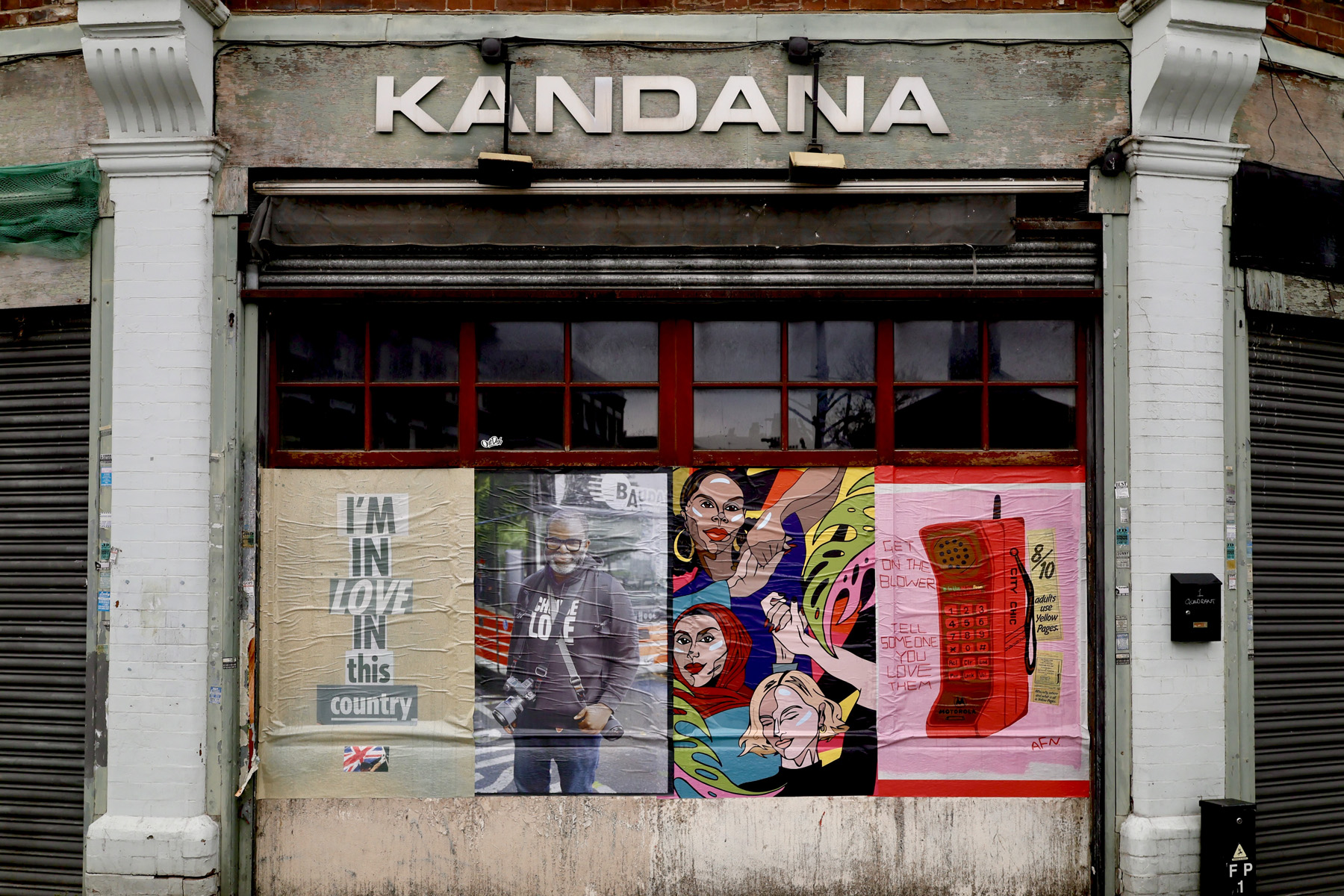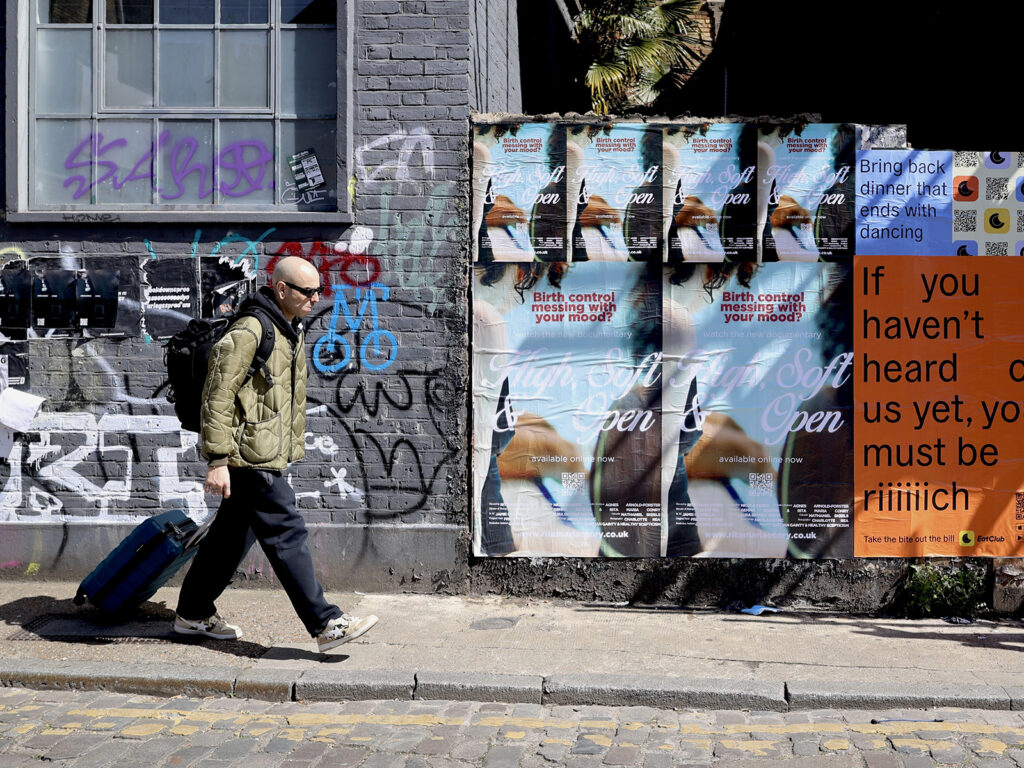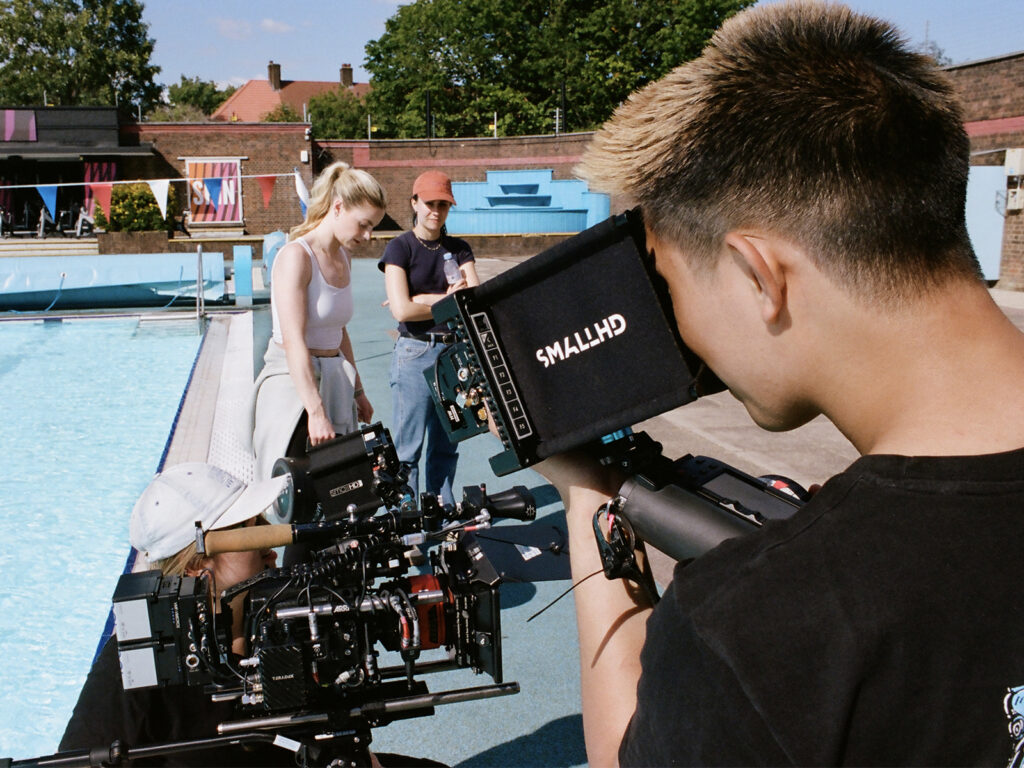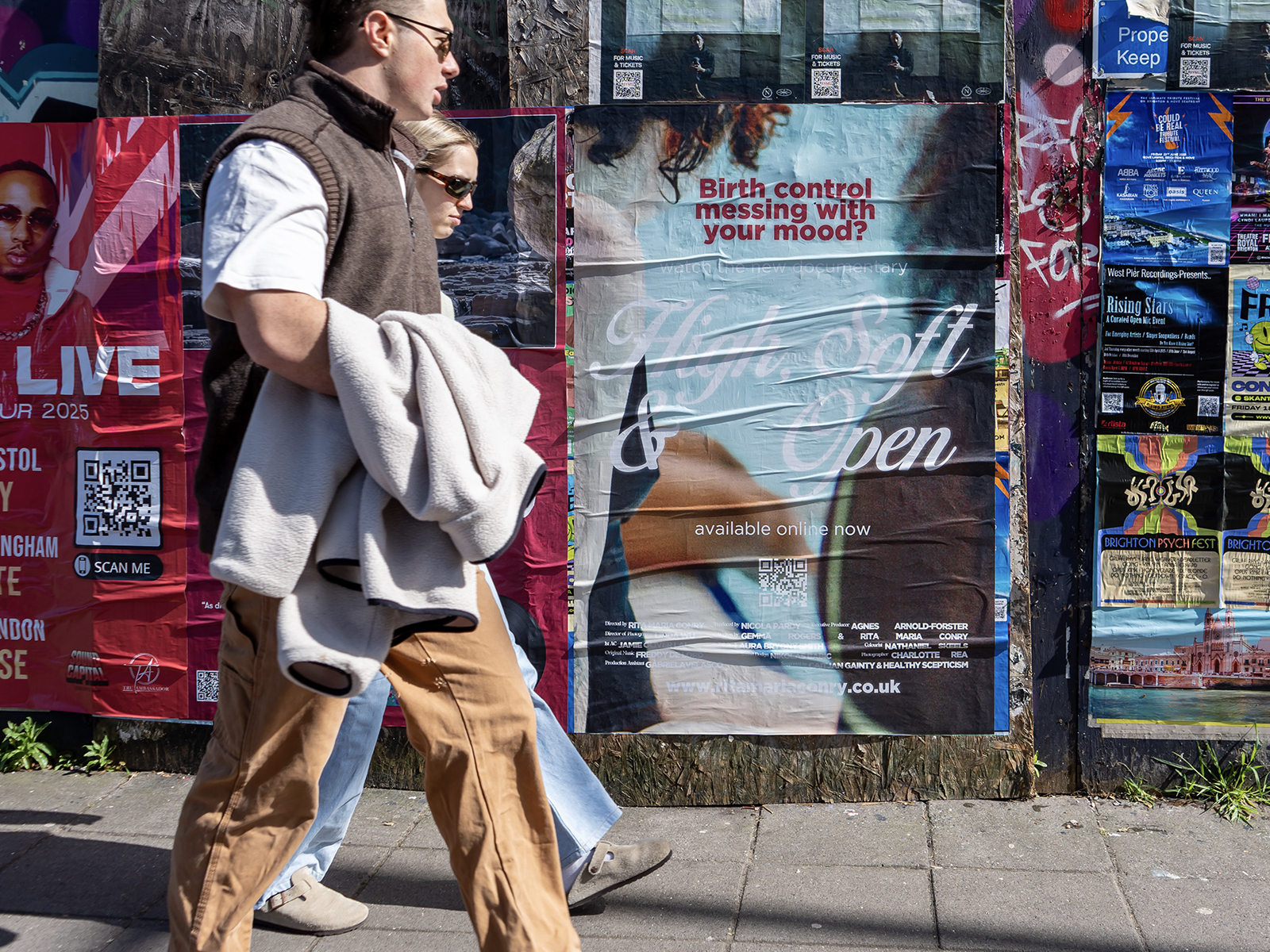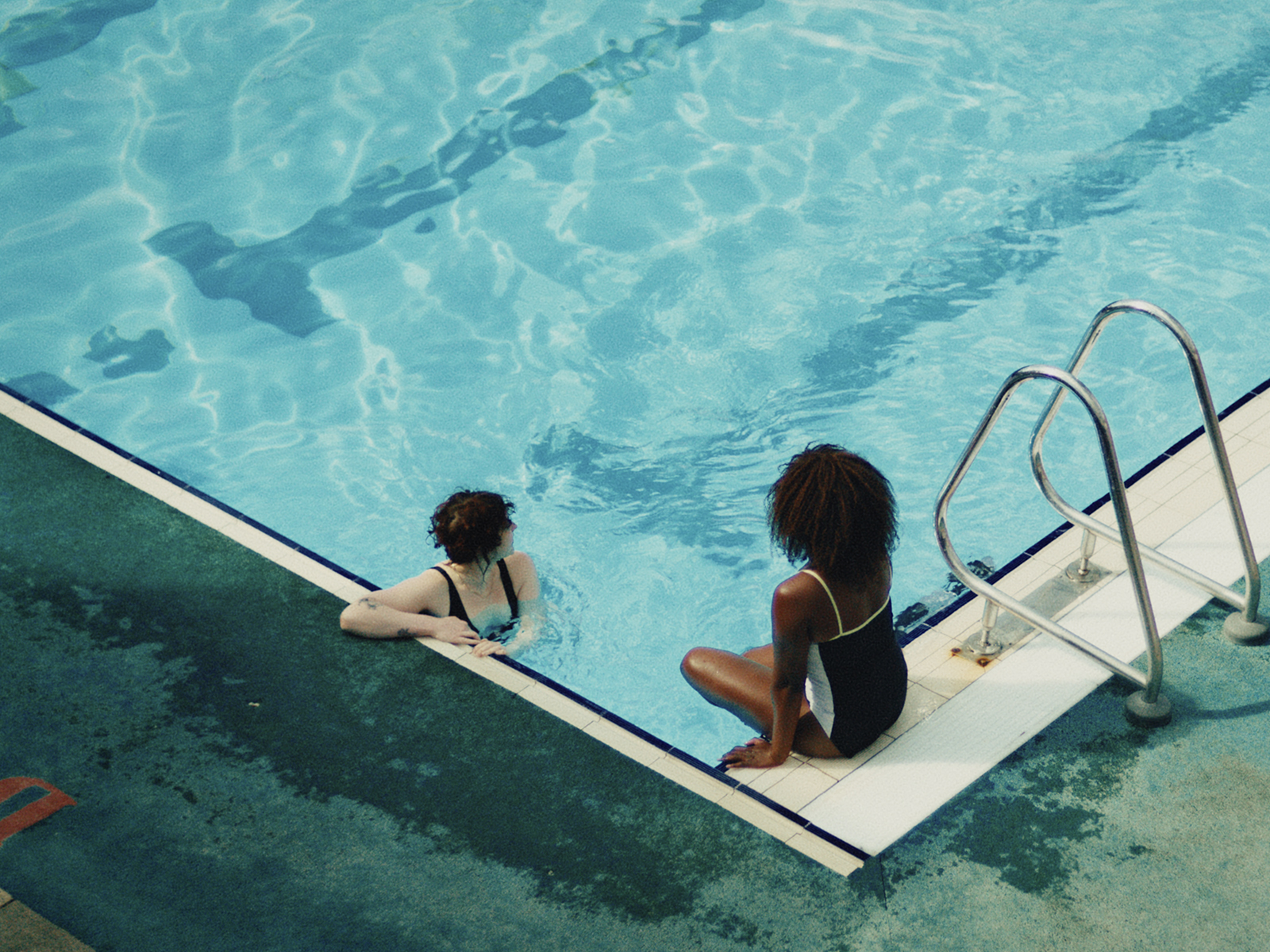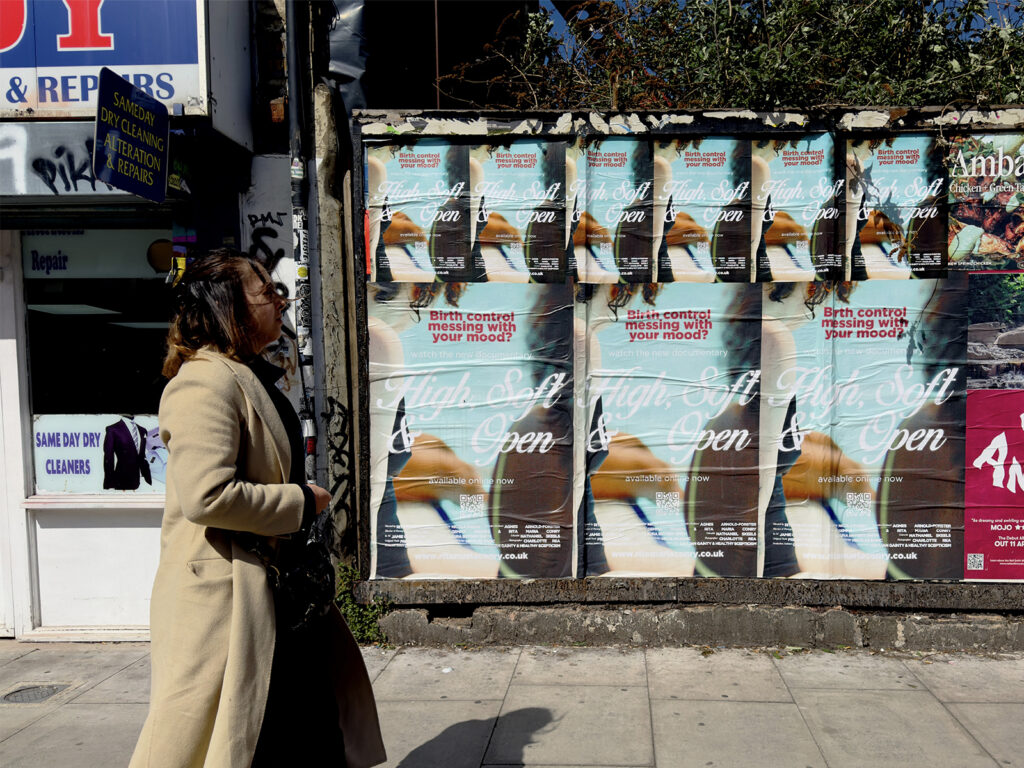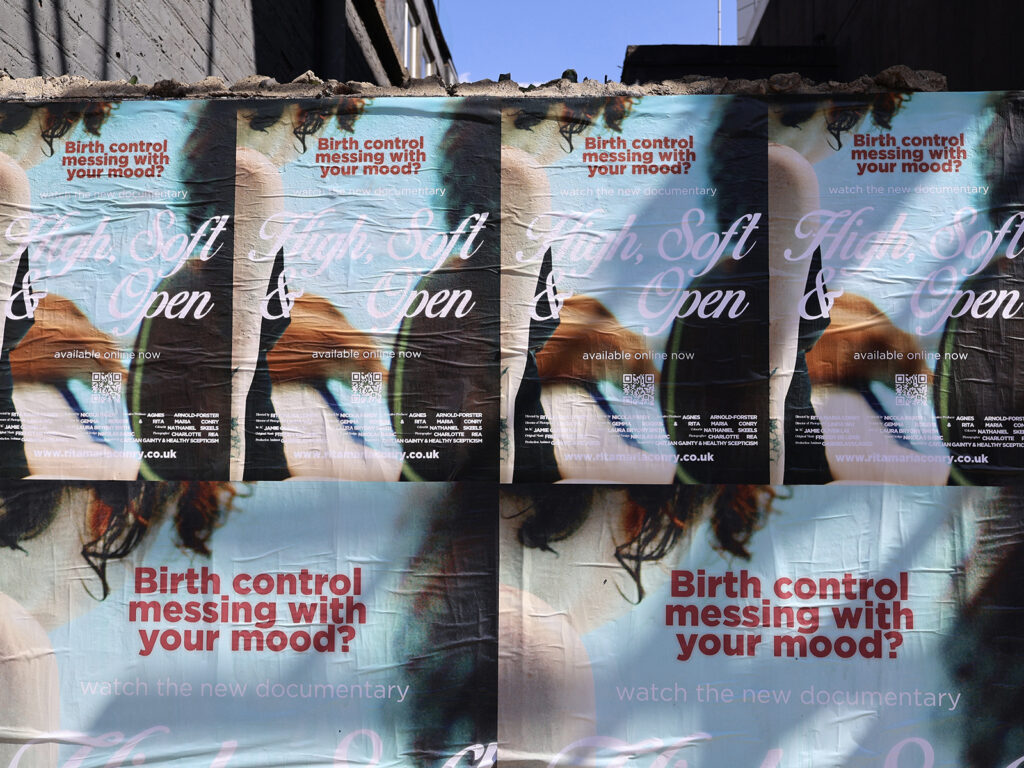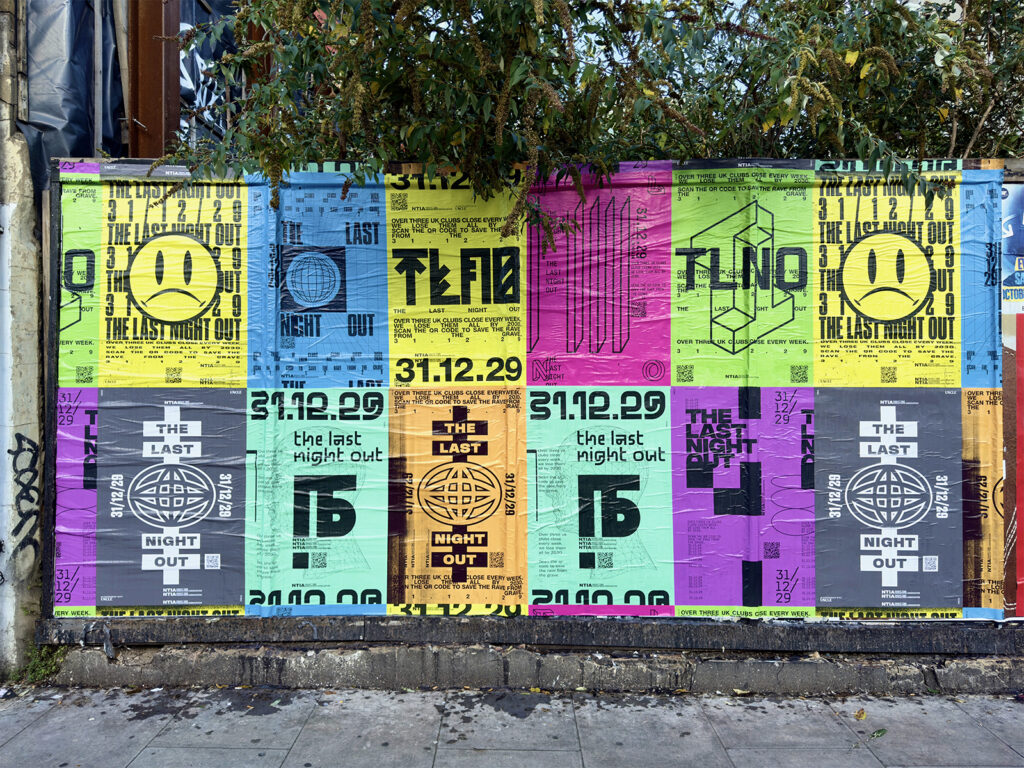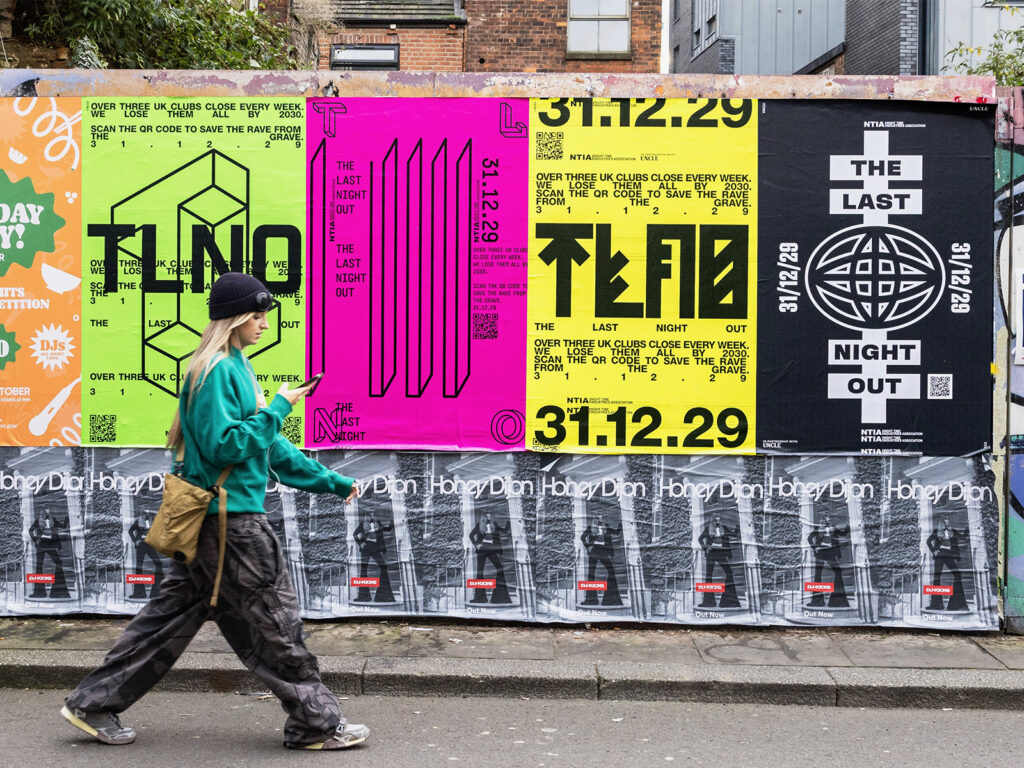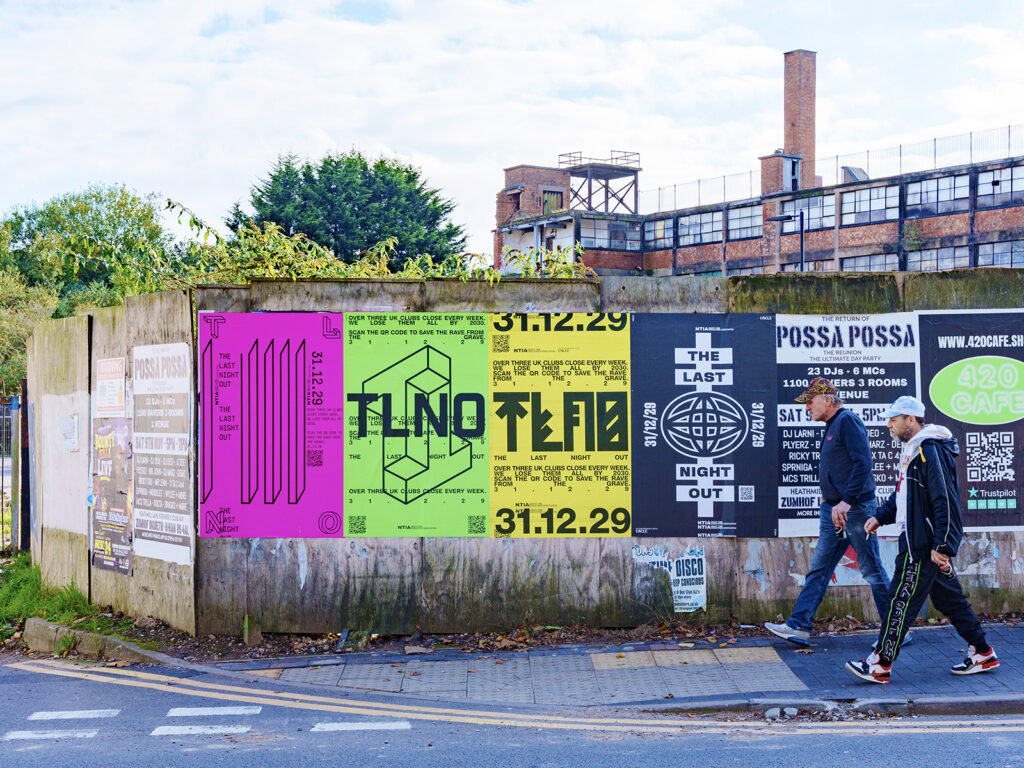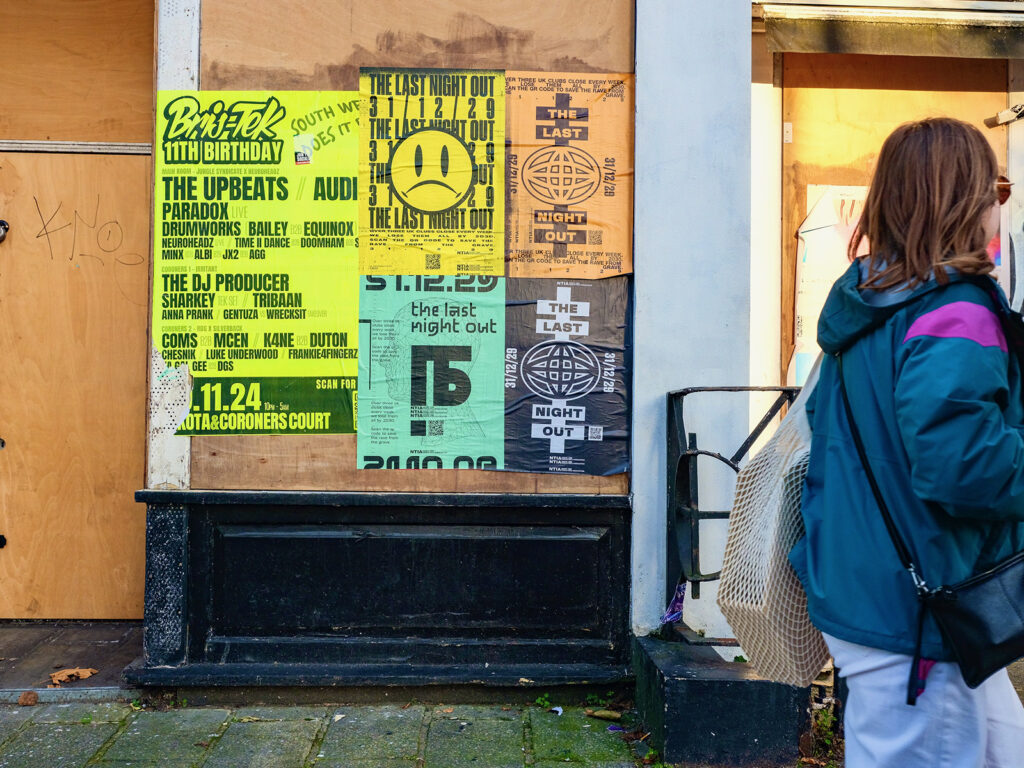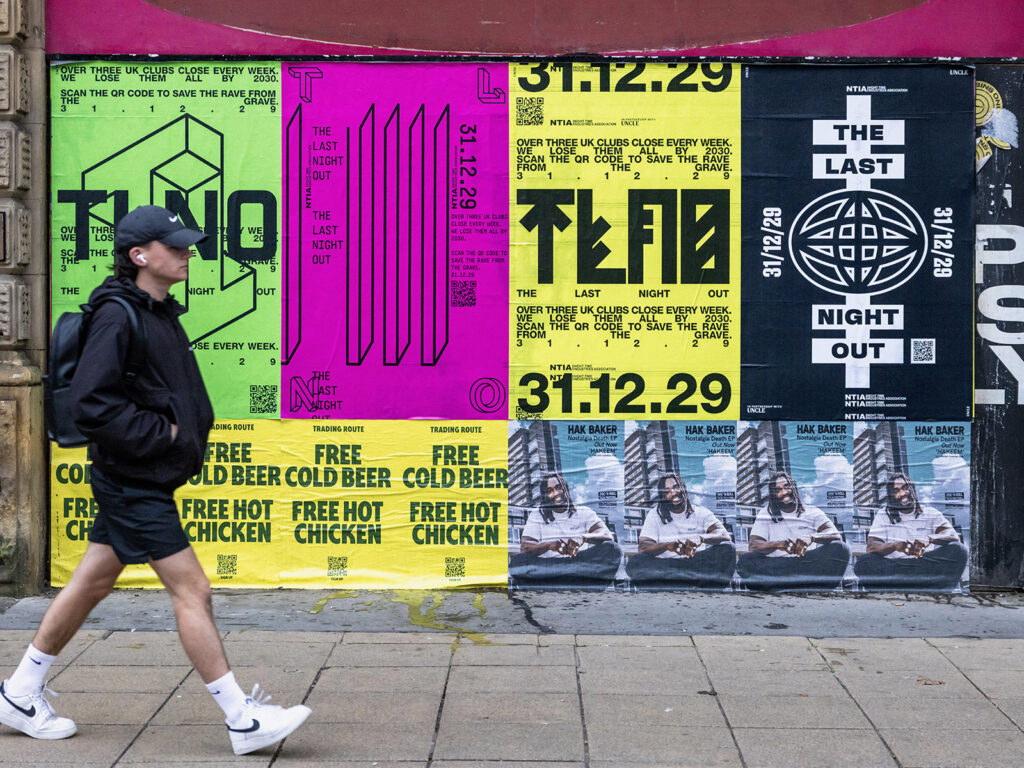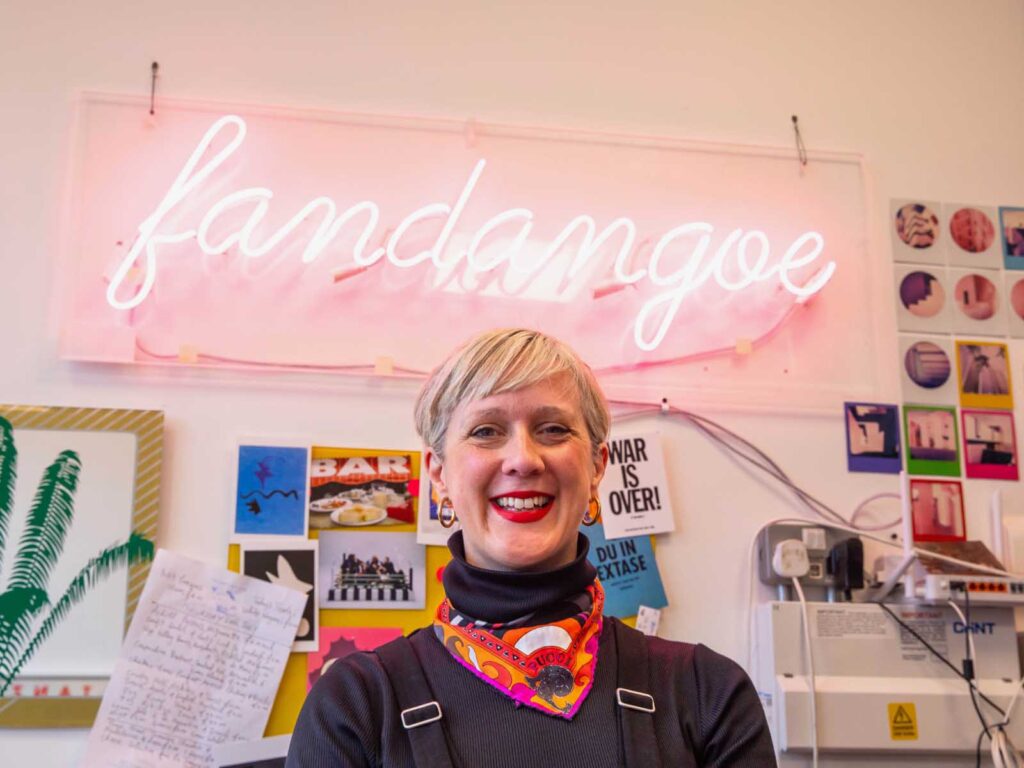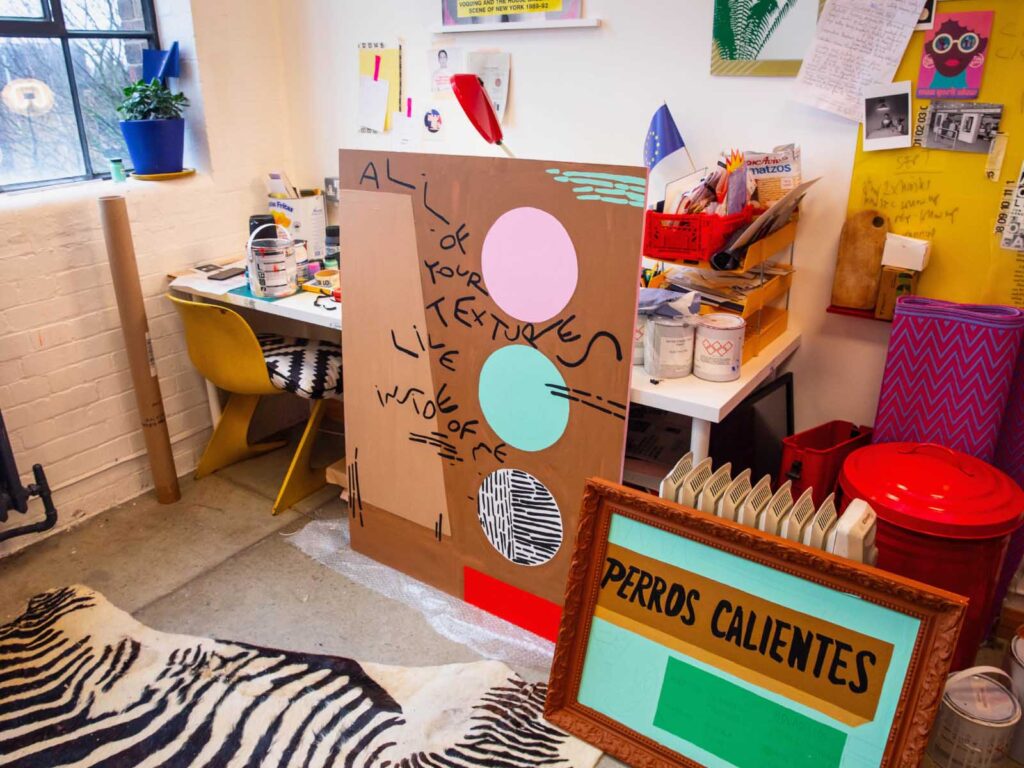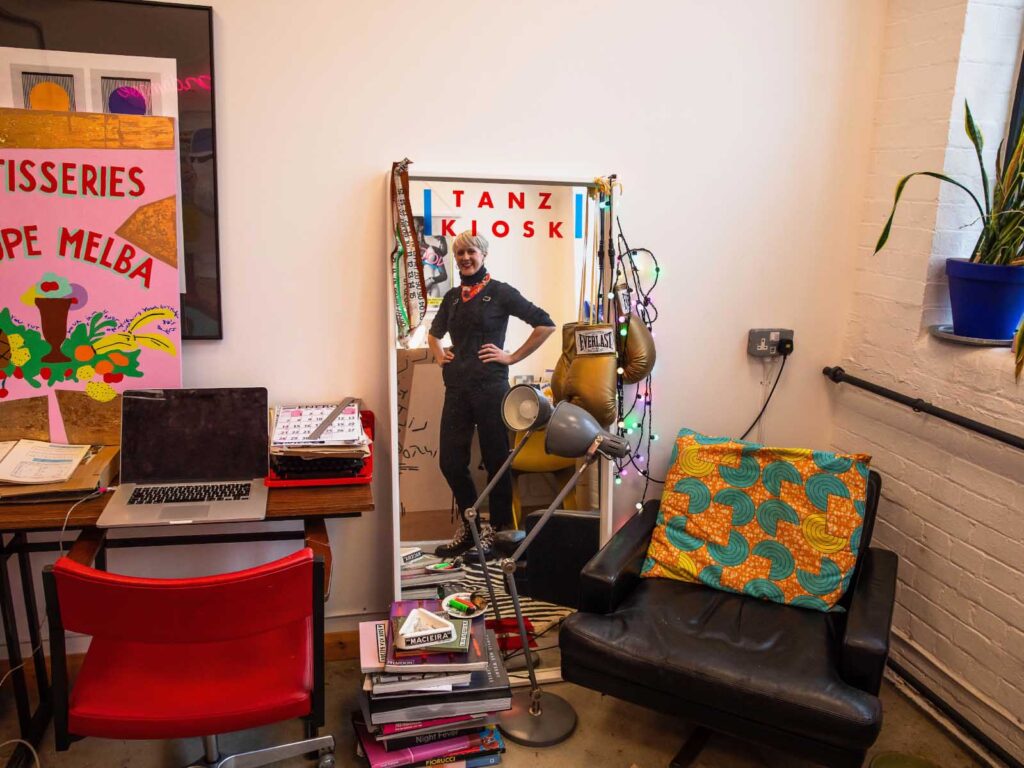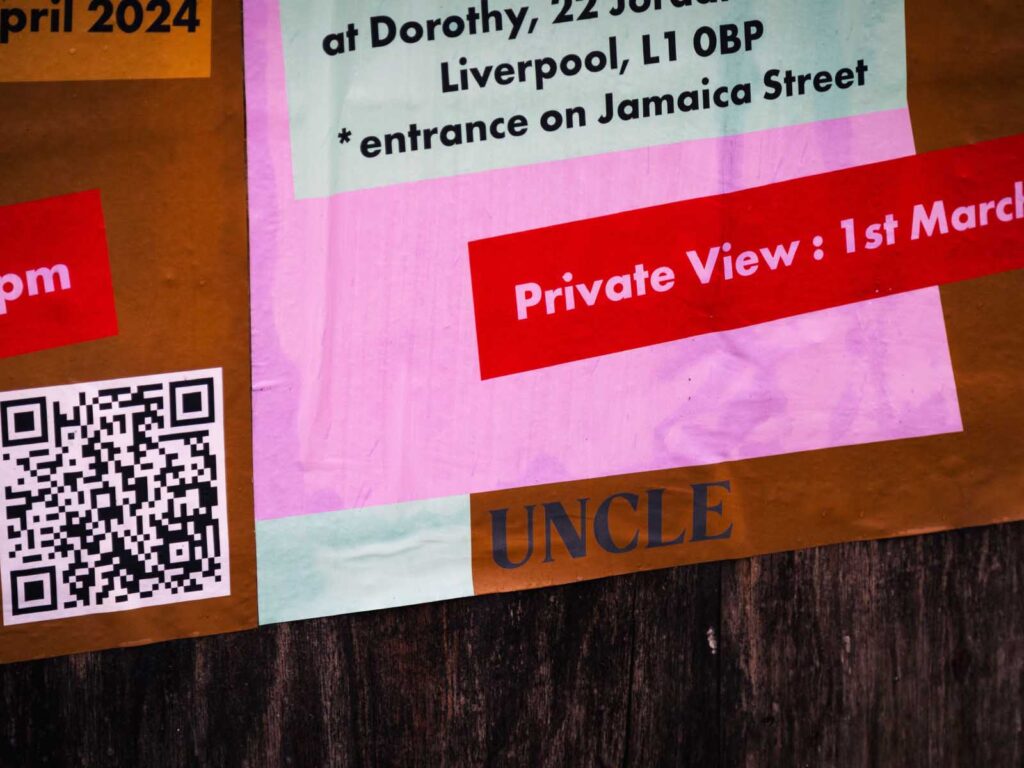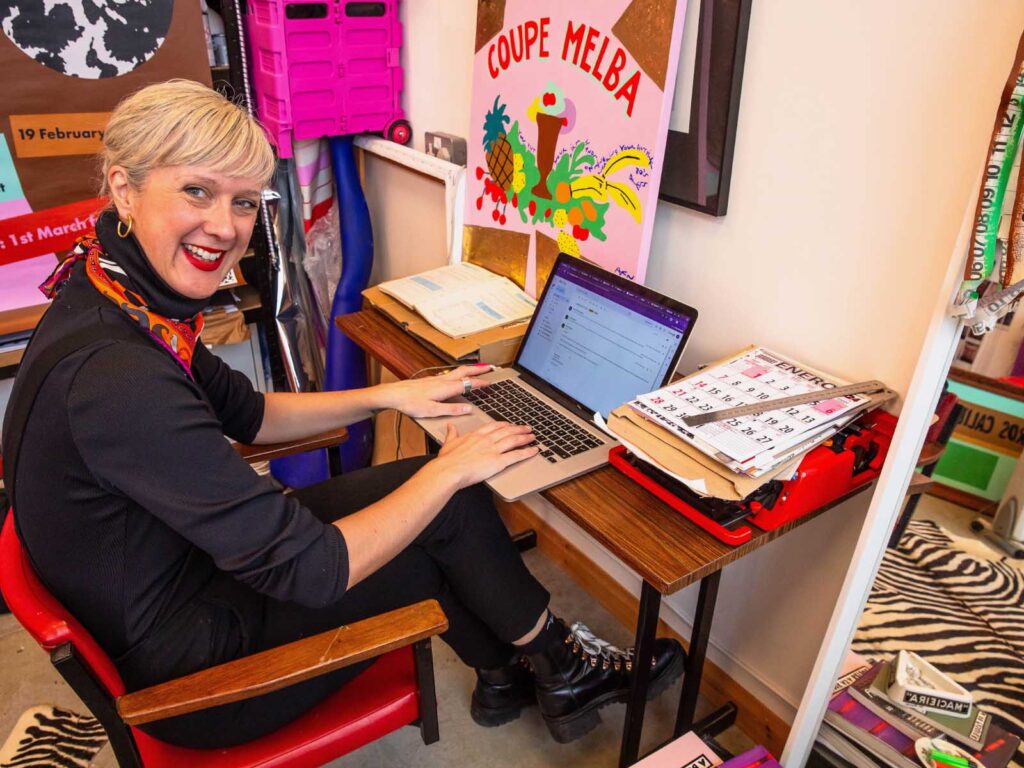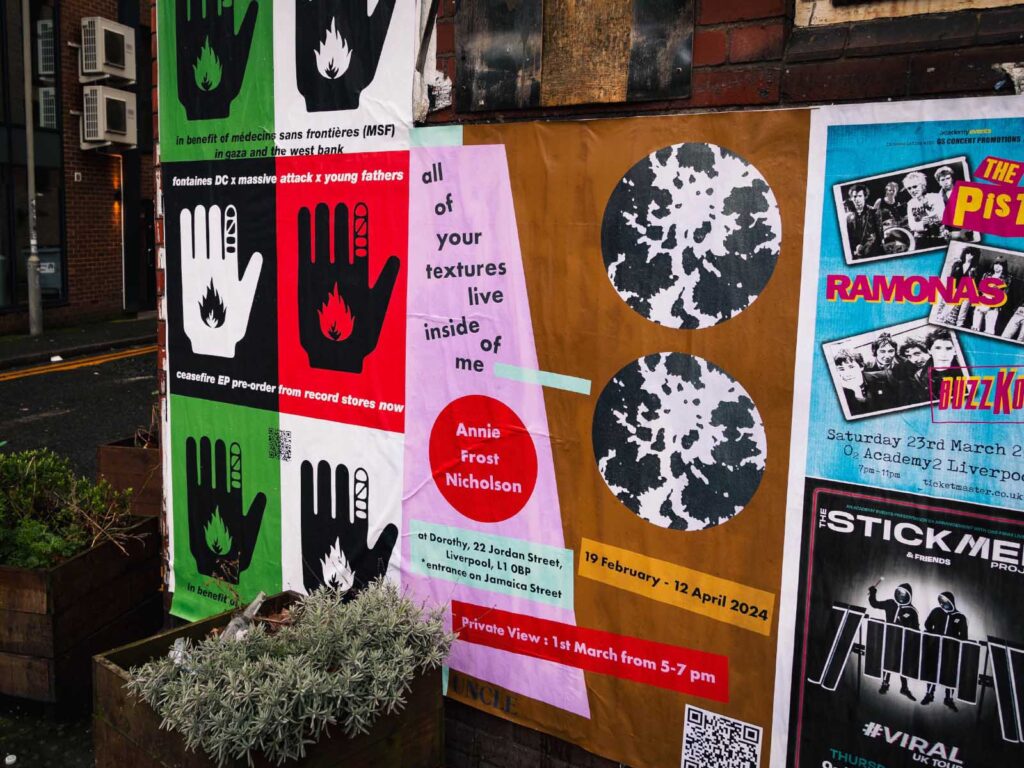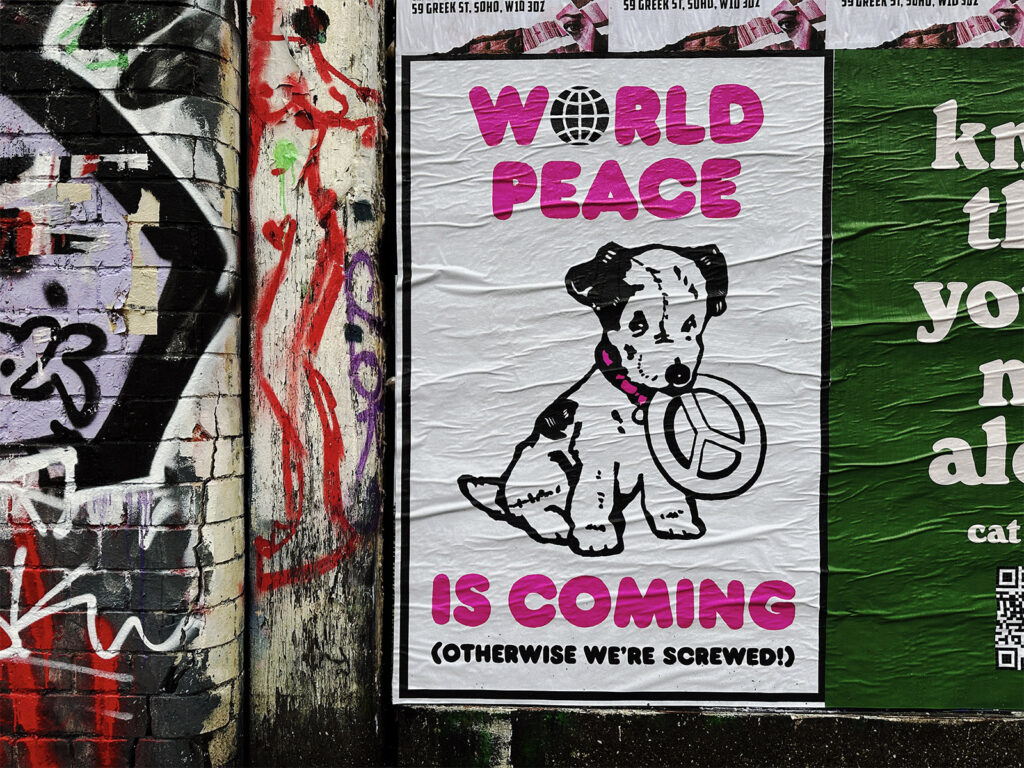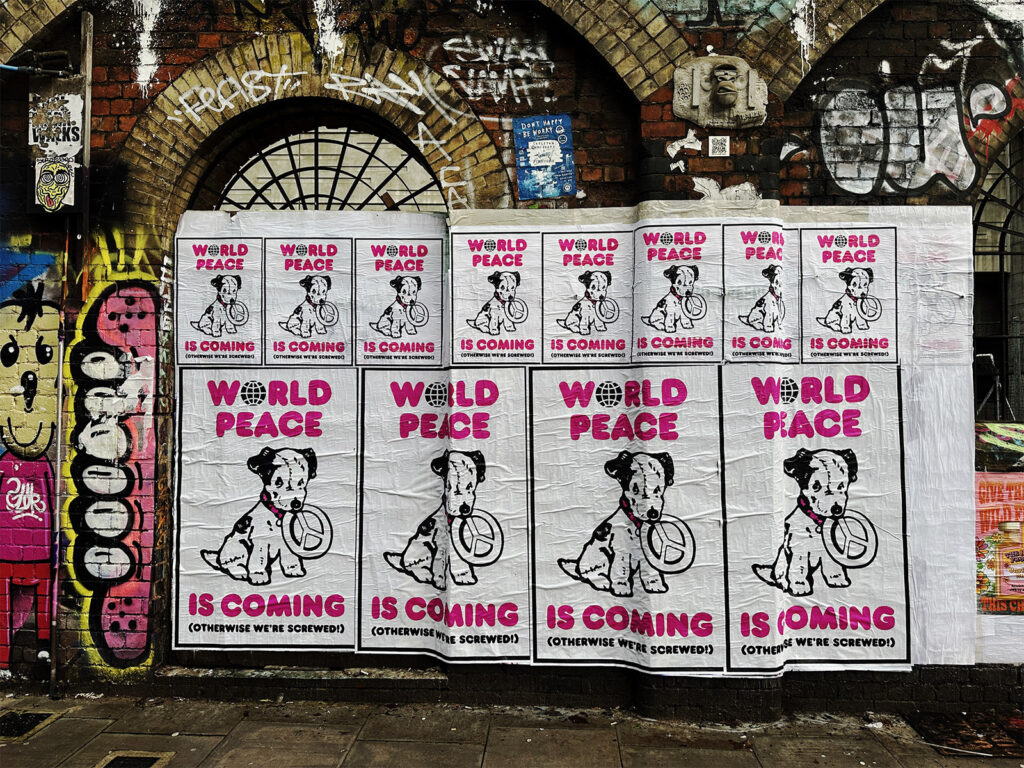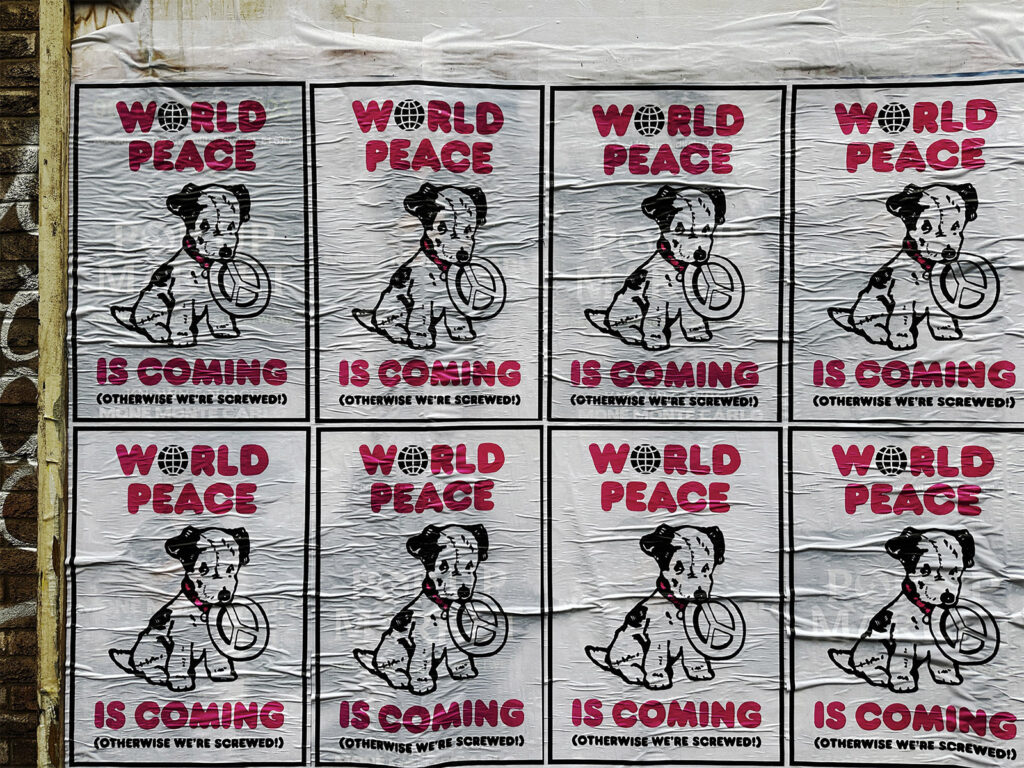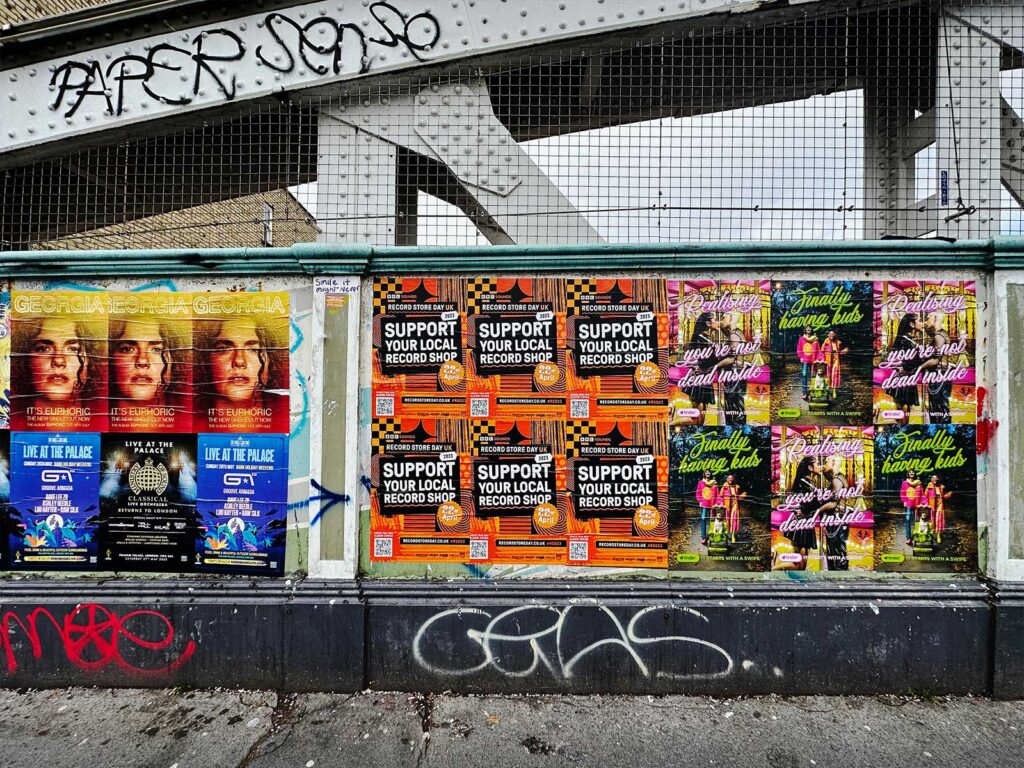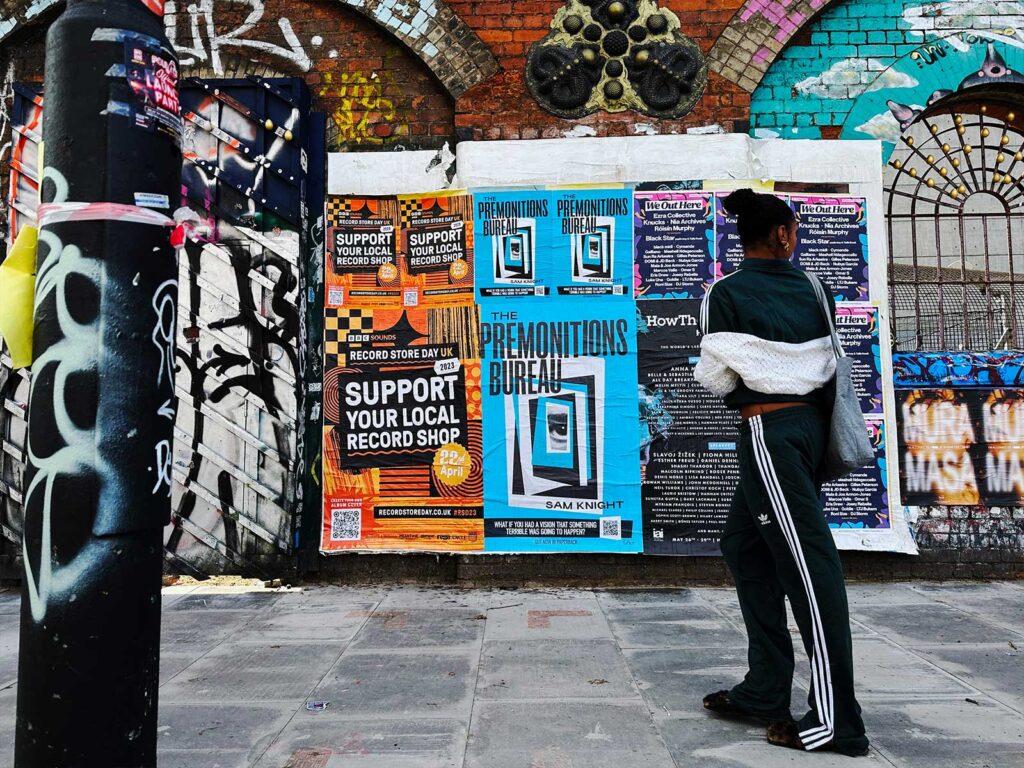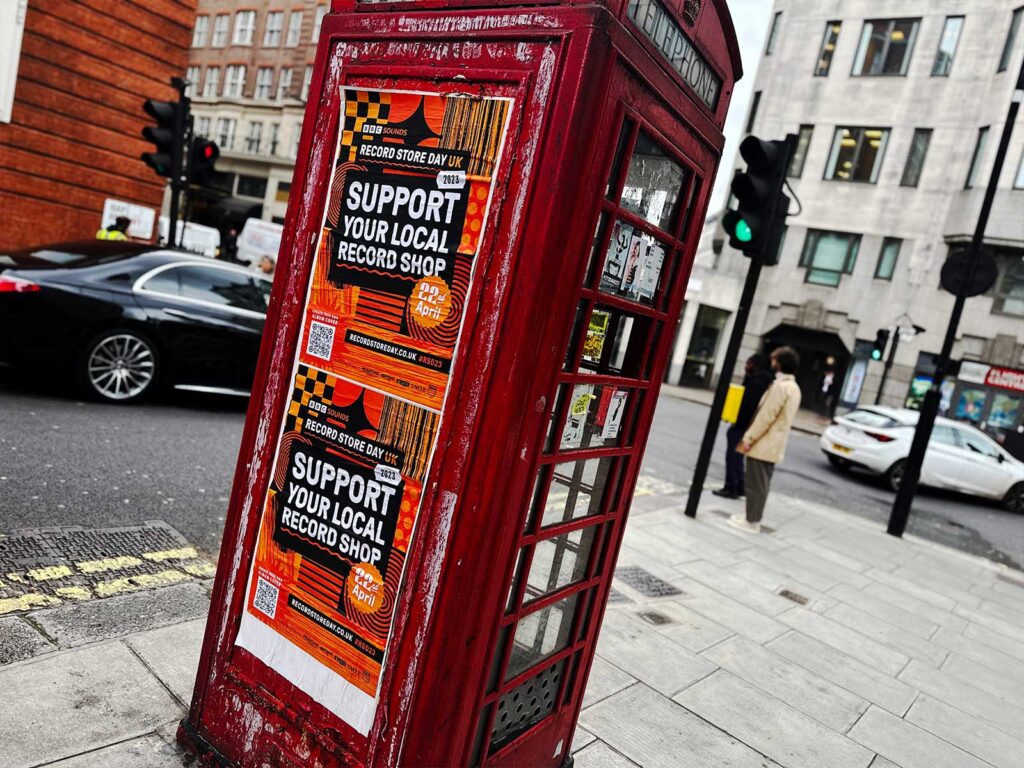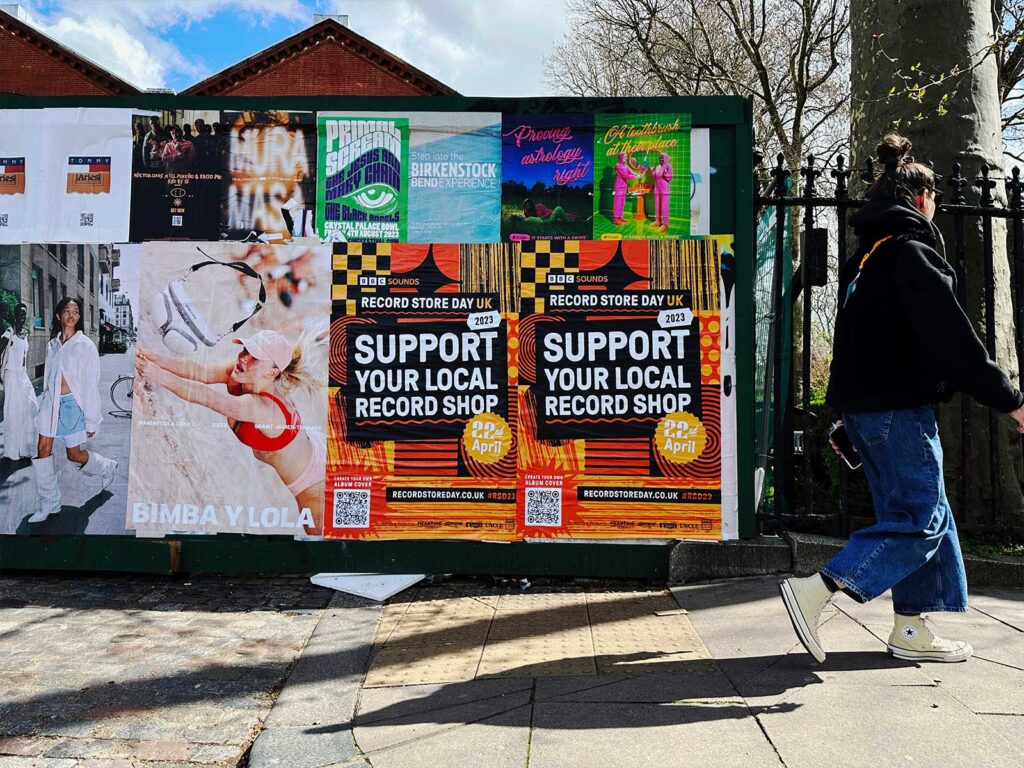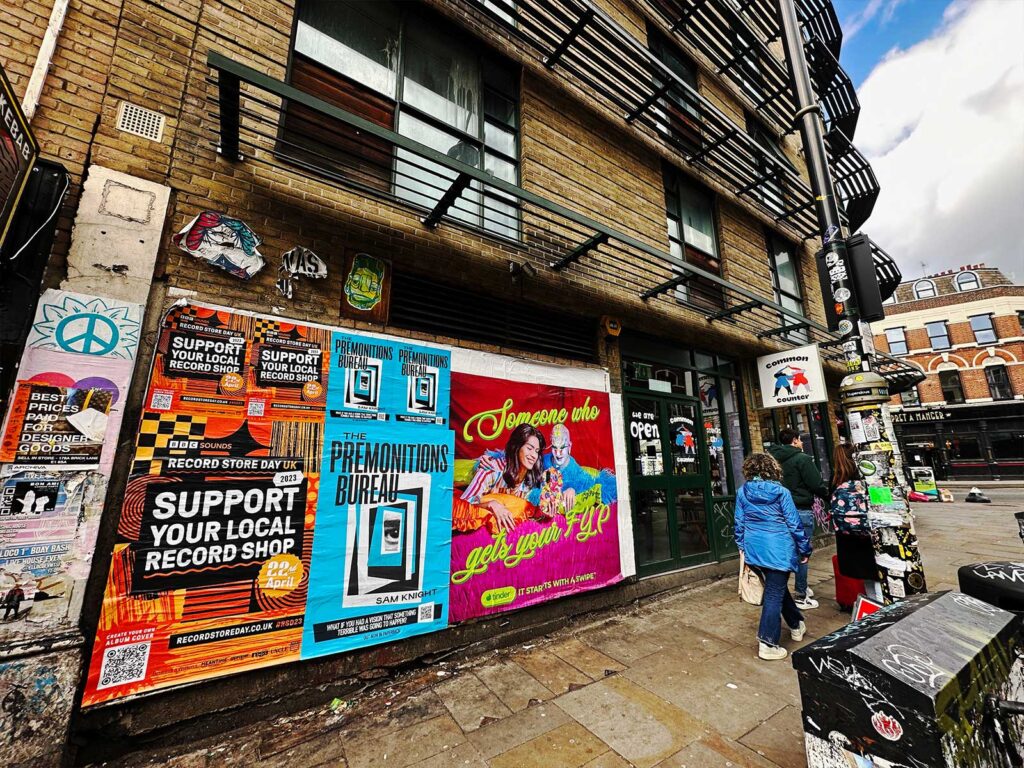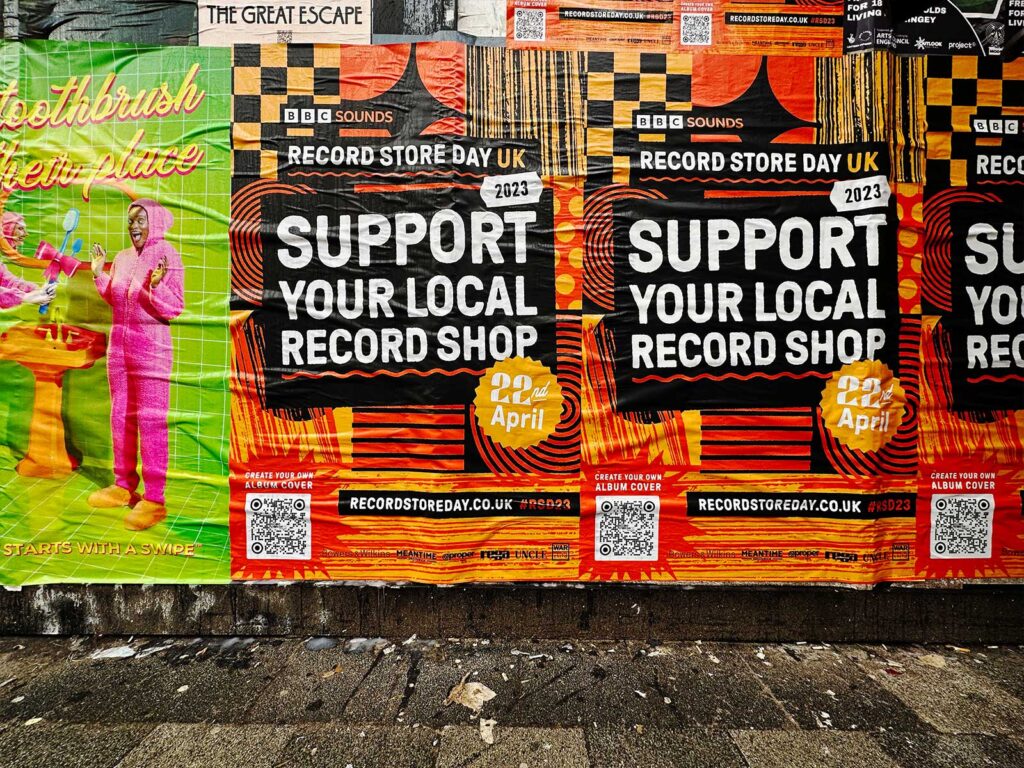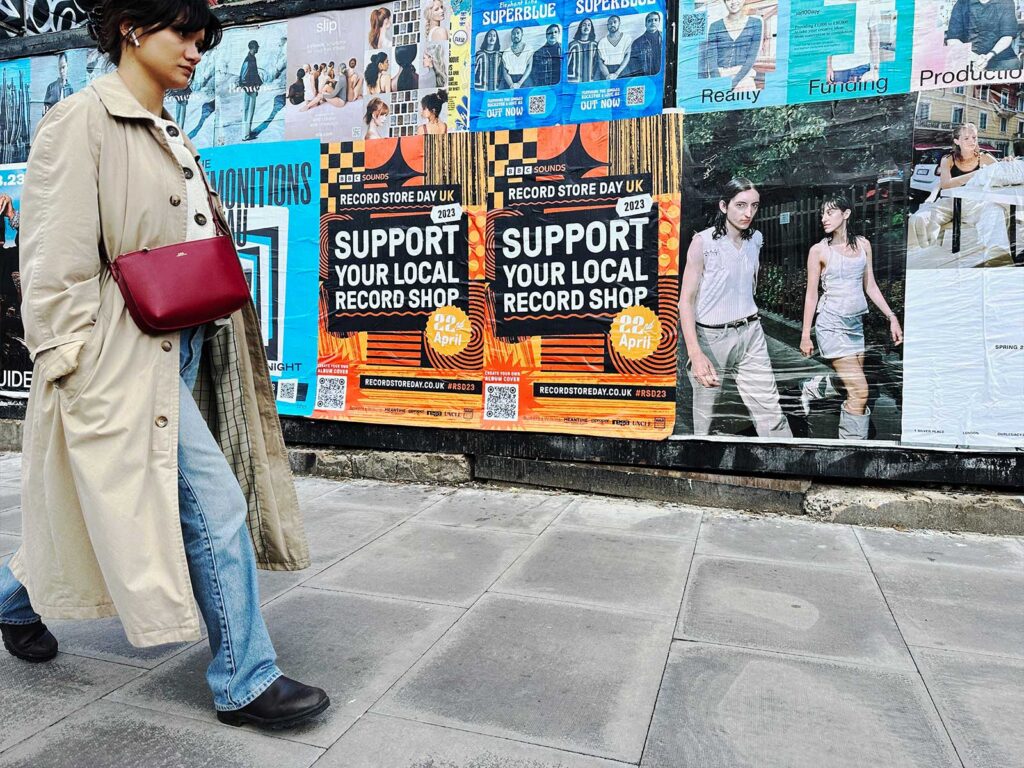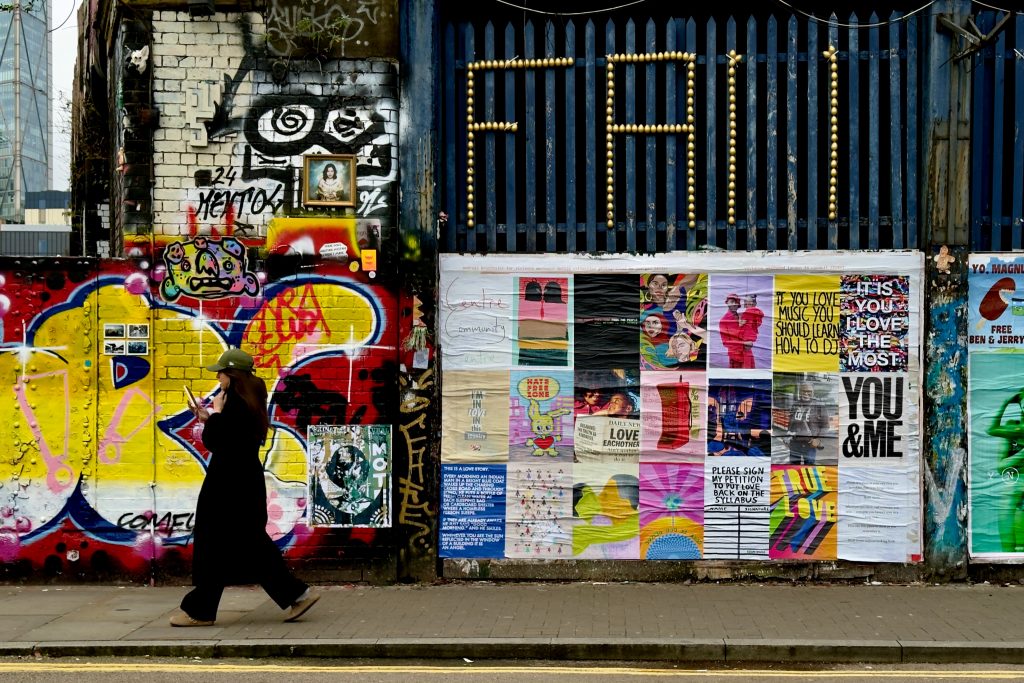
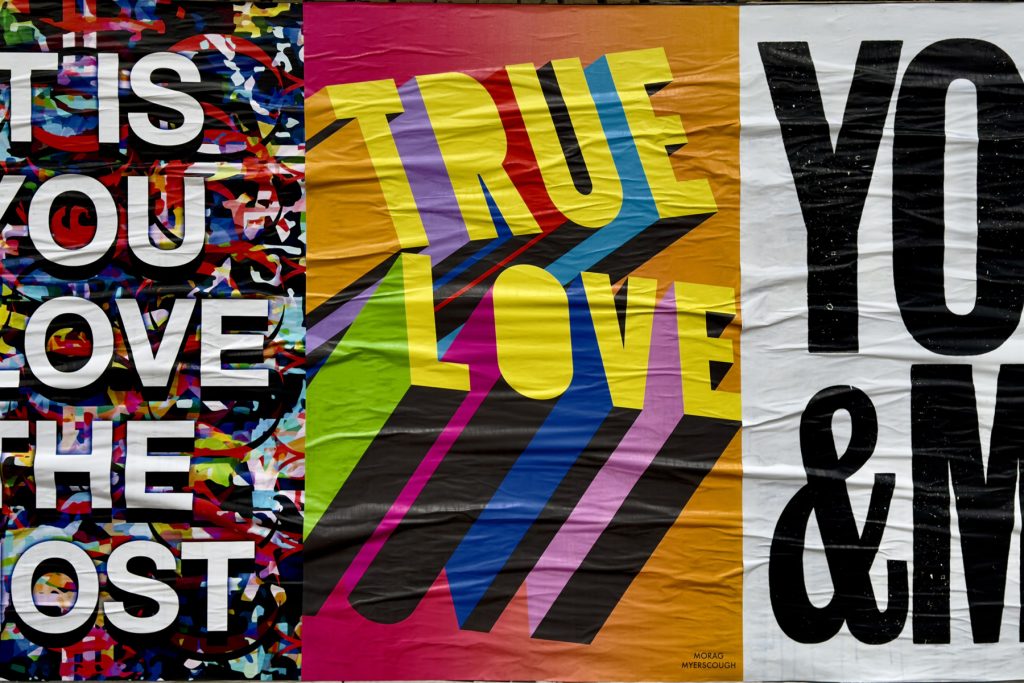

Is it getting more embarrassing to be a human being? What’s another year taught us? Unspeakable cruelty isn’t the sole province of any one race, creed or ideology. Tick!
No doubt, it has always been this way, but today there’s just no escaping reports of conflict, abuses of power, mendacity or simply plain indifference to other peoples’ plight. And yet, there are sparks of resistance — those among us who seek to bring the world together with compassion and ethical concern. Courage, thoughtfulness and care — in other words, LOVE — is the only antidote to the bleak era we’re living through.
Inspired by the passionate few who face up to great adversity, injustice, and fear — and those who simply offer everyday support and encouragement — UNCLE has partnered with BUILDHOLLYWOOD to close out the year with THIS IS A LOVE PROTEST: a UK-wide street gallery running from 15 December to the end of January in support of War Child. The showcase features work from 21 artists, each responding to the righteous, brave, and liberatory power of LOVE, with original pieces spanning illustration, painting, photography, textiles, graphic design, mixed media, and text-based art.
For more than three decades, War Child has been driven by a single goal — ensuring a safe future for every child living through war. Please consider making a charity donation here — every penny goes straight to War Child.
We are deeply grateful to the hugely talented artists who have responded to this call — you can explore all their works using the index below. Each artwork is accompanied by the artist’s quote reflecting on the project theme and the piece they have created. Wishing all our friends, collaborators, and clients heartfelt season’s greetings.
“Neither love nor terror makes one blind: indifference makes one blind.” 2
1 James Baldwin fr. Giovanni’s Room (1956)
2 James Baldwin fr. If Beale Street Could Talk (1974)
DONATE TO WAR CHILD
ADÉBAYO BOLAJI
“Ultimately, seasons are not conditional; you can typically rely on them. This kind of love is the hardest — the one we can rely on.
I have a poem that says:
And so, what is left?
For us to fly into Space
And claim ownership of stars?
And yet the Sun is screaming
‘I love both the good and the bad’
So, for me part of this painting speaks to that to the most epic and dangerous kind of love which is unconditional.
All beings in the painting are being present in the moment, enjoying the immediacy and fluency of nature itself.”
www.bolaji.studio
ALISA OLEVA
“I believe that by thinking about our connection to places and people we love, and creating portals to connect across times, obstacles, silences, absences, and distances, we can practice the future we dream of, and start walking towards it.”
alisaoleva.com
ANNIE FROST NICHOLSON
“F*ck fascism. We, the people, are a force to be reckoned with, and the strength of our communities is testament that love always, always trumps hate and fear.”
www.anniefrostnicholson.com
ANTHONY BURRILL
“Two short words joined by an ampersand. Simple, direct, human. A message stripped back to its most honest form — the connection between me and you.
In my work, I use the language of the street: chunky letterforms, bold contrasts, clear layouts, and a voice that feels like it’s talking straight to you. My posters don’t decorate; they communicate. Whether I paint them onto a wall, paste them on a hoarding, or stretch them across a billboard, You & Me becomes both a personal reminder and a public statement — a quiet kind of protest made through warmth and optimism.
This is my love protest: using positive messages to push back against cynicism, division, and noise. When you see You & Me out in the world, I hope it feels like a moment of calm in the chaos — an invitation to slow down, look up, and remember that kindness is something we share. In a time when messages often divide, I want my words to bring us back together. Because change doesn’t always start with anger — sometimes, it begins with love.”
anthonyburrill.com
BABAK GANJEI
“It feels like the world at large would benefit from teaching its younger inhabitants compassion at an early age as opposed to the fear that ultimately divides us.”
www.babakganjeiworks.com
BEVAN AGYEMANG
“Love remembers the stories, sacrifices, that form our foundation. To love across generations is to understand that time does not separate it connects. It’s the omnipresent thread binding past, present, and future.”
www.instagram.com/bevan_agyemang
CORBIN SHAW
“I’m in love in this country is a twist on the idea of finding love in a hopeless place. I wanted people to misread it as they passed by, as if it said, ‘I’m in love with this country’. I liked the idea that viewers could interpret it in their own way.”
www.corbinshaw.com
ELIJAH
“Loving the space and time you exist in is finding the right music to soundtrack it with, so collecting, curating, and finding ways to share that joy with others is an intangible form of optimism that is needed in these crazy times.”
www.instagram.com/eli1ah
GAURAB THAKALI
“The portrait of the man at the piano is Bill Evans, and the artwork is inspired by his song Peace Piece. It’s a beautiful, timeless piece of music with a meditative, reflective feel.
The other artwork is dedicated to Gil Scott-Heron — musician, author, and spoken-word performer. It’s inspired by his lyrics and the themes he often explored: social and racial injustice, hope, disillusionment, and the human condition.”
www.gaurabthakali.com
JEREMY DELLER
www.jeremydeller.org
JOE CRUZ
“Kissing is great — celebrate kissing whoever you love x.”
jcruz.co.uk
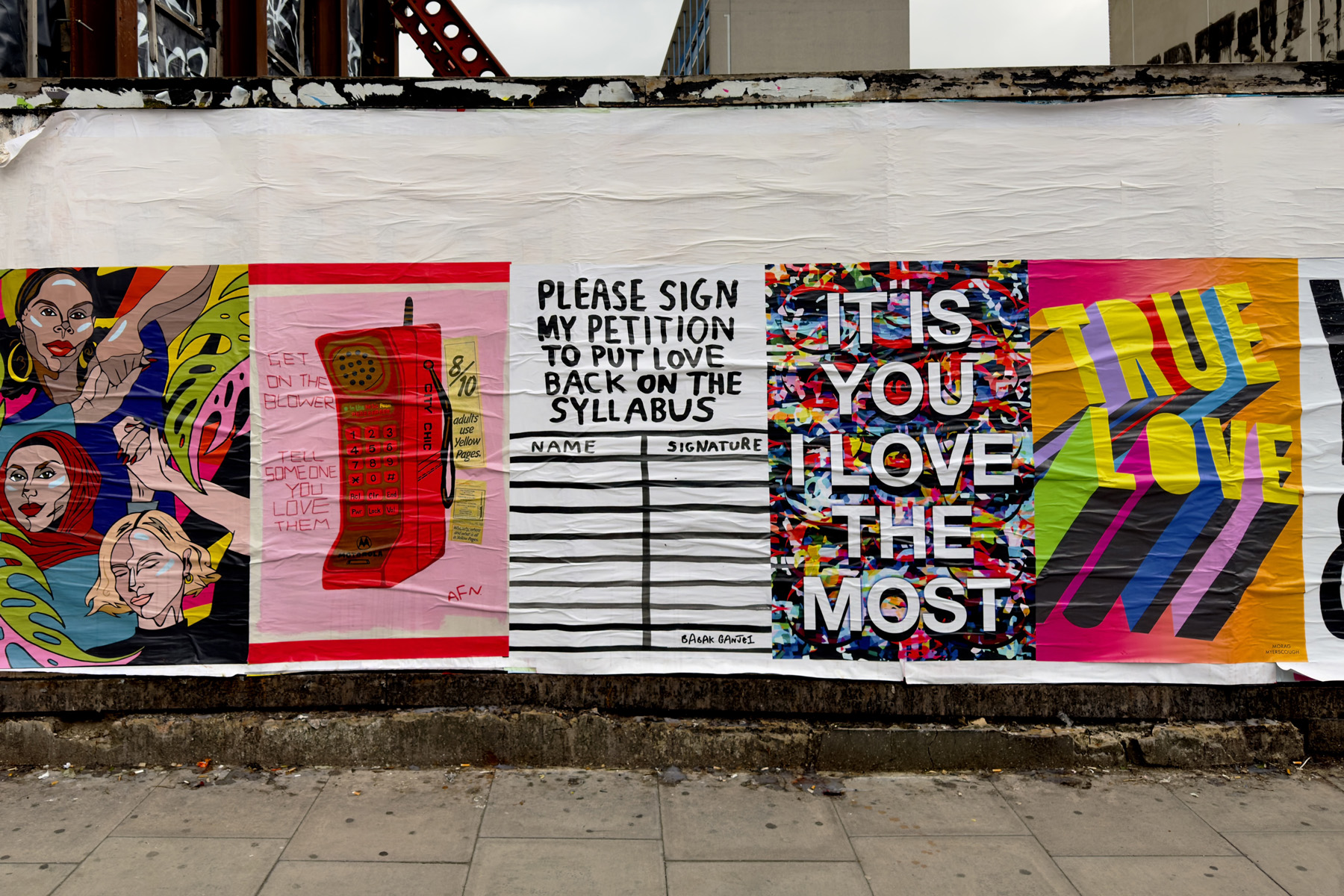
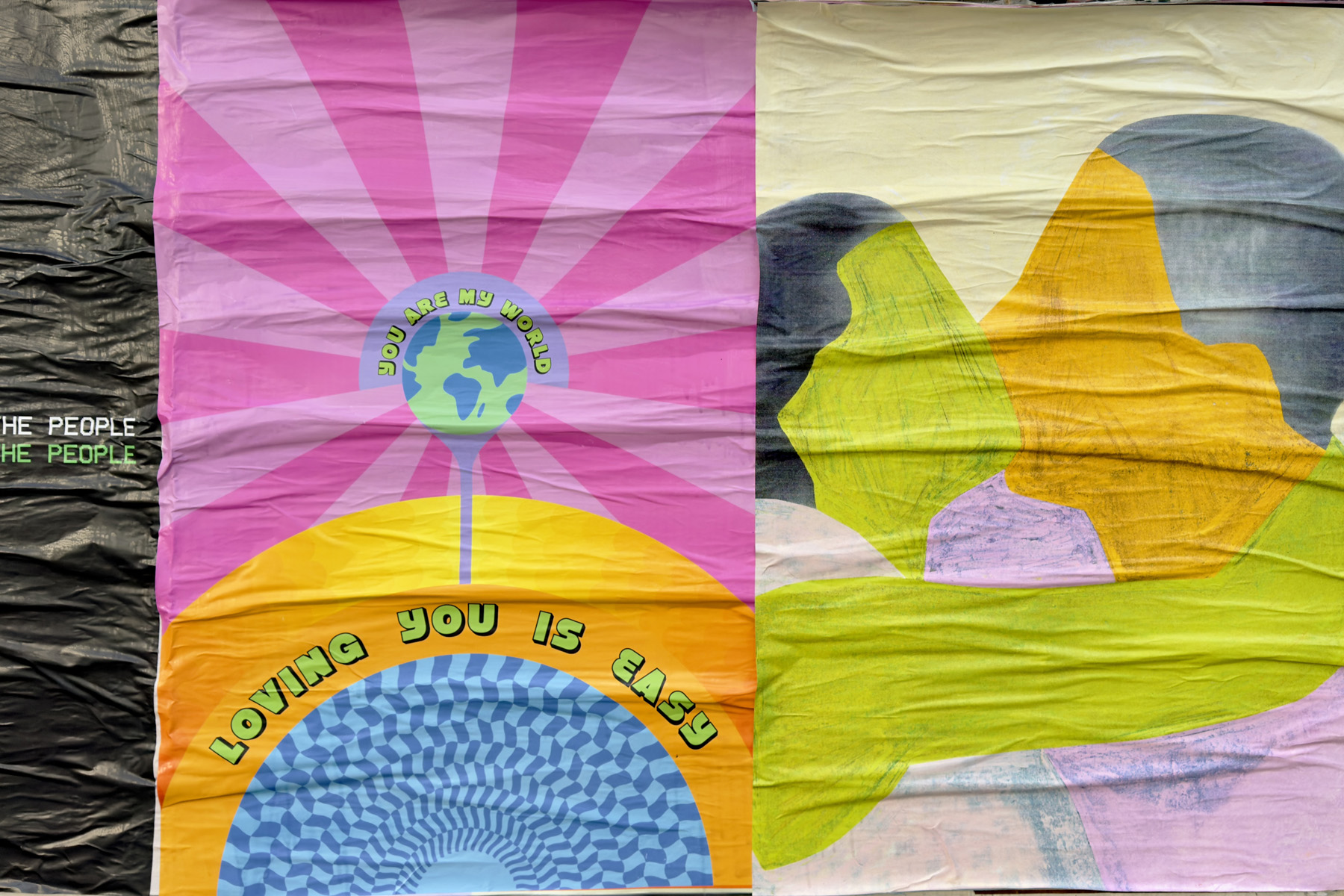
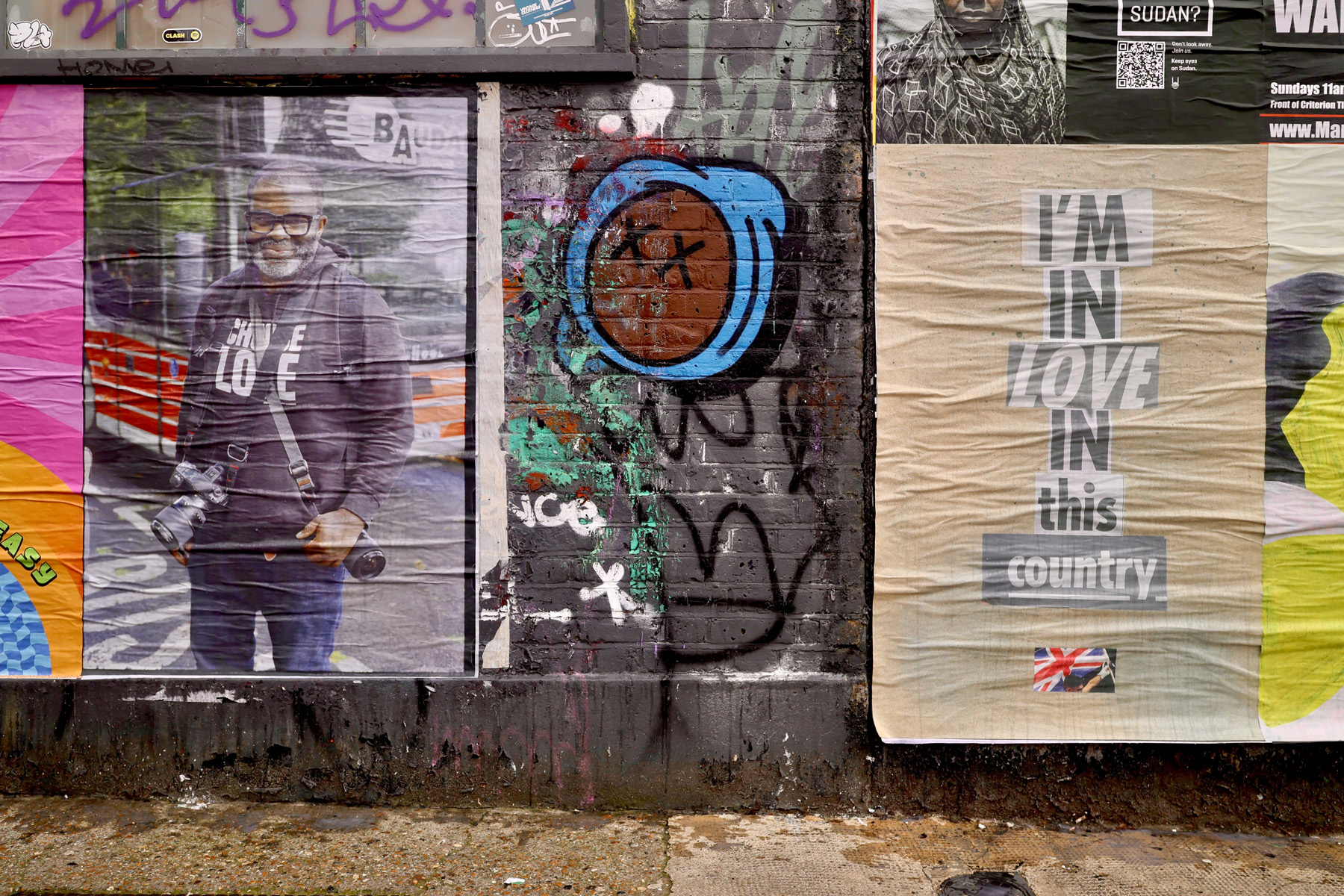
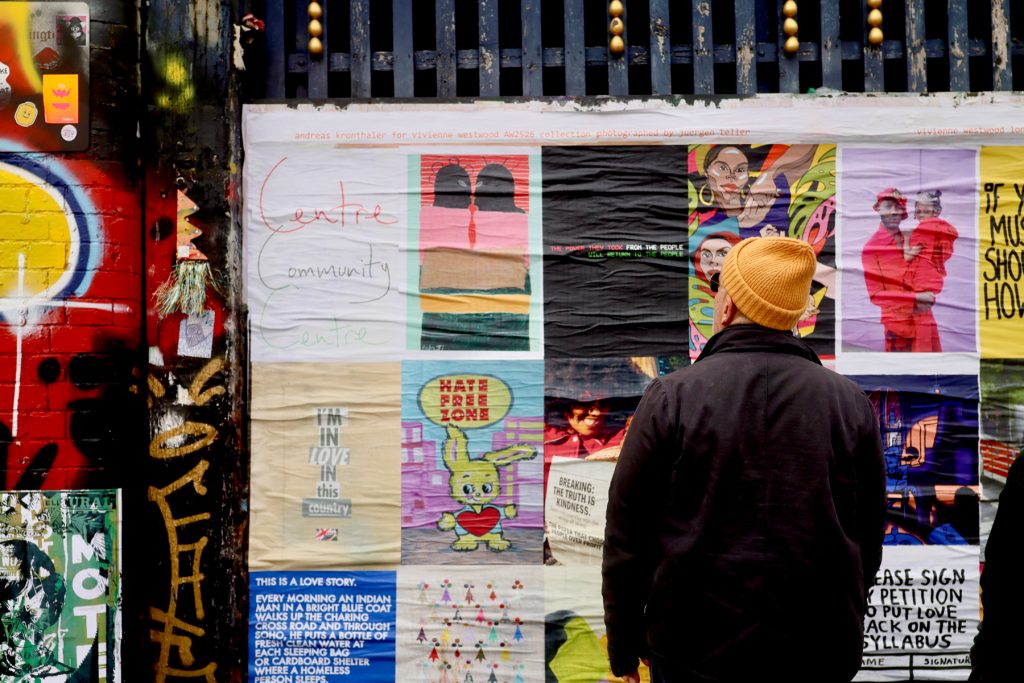
MAGDA ARCHER
“Ugh! I’m just so sick of all the hate out there. You know what they say: ‘If you haven’t got anything nice to say, don’t say anything at all.’ So, more love for 2026, please.”
www.instagram.com/magdaarcher
MARK TITCHNER
“Raoul Vaneigem writes in The Revolution of Everyday Life that those who speak of revolution and class struggle ‘without understanding what is subversive about love’ do so with ‘a corpse in their mouth’. Love resists constraints, demands sacrifice, and is selfless. It suggests something that counters much contemporary logic, namely that we individuals, we ‘me’s’, are not in fact the centre of the universe.
Advertising media, in its many forms, informs us that ‘you want’ and that ‘you need’, reminding us of our duty to eternal consumption in the service of self-betterment. In this work, It Is You I Love the Most, I simply wanted to shift this logic. By addressing ‘you’ directly I aimed not to emphasise what it is you lack, but instead to offer a gift — that thing that we all may choose to offer: love.”
marktitchner.com
MOLLY HANKINSON
“I created Sisterhood in 2020, and it was part of Your Space Or Mine in Glasgow during lockdown. It’s been great to revisit and reflect on its themes of togetherness, solidarity, and coalition-building. It still feels as — if not more — poignant and essential to amplify this message today.”
www.mollyhankinson.com
MORAG MYERSCOUGH
“True Love as protest is about more than personal relationships; it embodies a commitment to collective wellbeing.
True Love embraces empathy, understanding, and compassion. True Love ignites hope, transforms landscapes and inspires us to envision a world that is united by compassion and understanding. In celebrating love, we challenge discrimination and indifference, paving the way for a brighter, more inclusive future.”
www.moragmyerscough.com
REBECCA ZEPHYR THOMAS
“I chose this portrait of activist and photographer Misan Harriman because he is relentless in his work to spread justice and love into the world. His voice is calm, empathic, and informed, and he touches people around the world via his art and activism. The image was shot at a protest for Palestine in London in July 2024, Misan is a light that the world needs in these current times, always advocating for our shared humanity.”
www.rebeccazephyrthomas.com
ROBERT MONTGOMERY
“I’m really happy to be part of this project raising funds for War Child. These posters are an extension of my new poem in the plaza at Centrepoint on Charing Cross Road in London. The words celebrate everyday acts of kindness. Showing kindness to the most vulnerable people in our world is more important now than ever before. Kindness is our highest power.”
www.robertmontgomery.org
SGÀIRE WOOD
“The World is Still Your Toy is dedicated to children, especially those who are victims of conflict, violence and genocide. The heraldic ermine motif represents the abstraction of violence and the anonymisation of those experiencing it but also a call to stand united in our varied experiences against fascism and oppression worldwide. All children should know that the world and all the potential it holds continue to belong to all of us. Free Palestine.”
www.instagram.com/sgairewood
SUEDE
“In a country obsessed with headlines about fear, these two write their own front page: kids of immigrants choosing kindness as their legacy — a reminder that love isn’t soft; it’s resistance!”
www.instagram.com/suede_baby
TRACKIE MCLEOD
“Love itself is an act of protest. It’s time to rise against governments that fuel war, spread hate, and chase profit over humanity. The power they’ve stolen will return to the people, if we speak out and stand together.”
trackiemcleod.com
YINKA ILORI
“This artwork was originally conceived as an allegory for maternal figures. It stands as an emblem of unconditional love, balance, deep care, and benevolence. A force that mirrors what has been freely given. It represents the quiet strength that nurtures and holds communities together, especially in times of division.”
yinkailori.com
